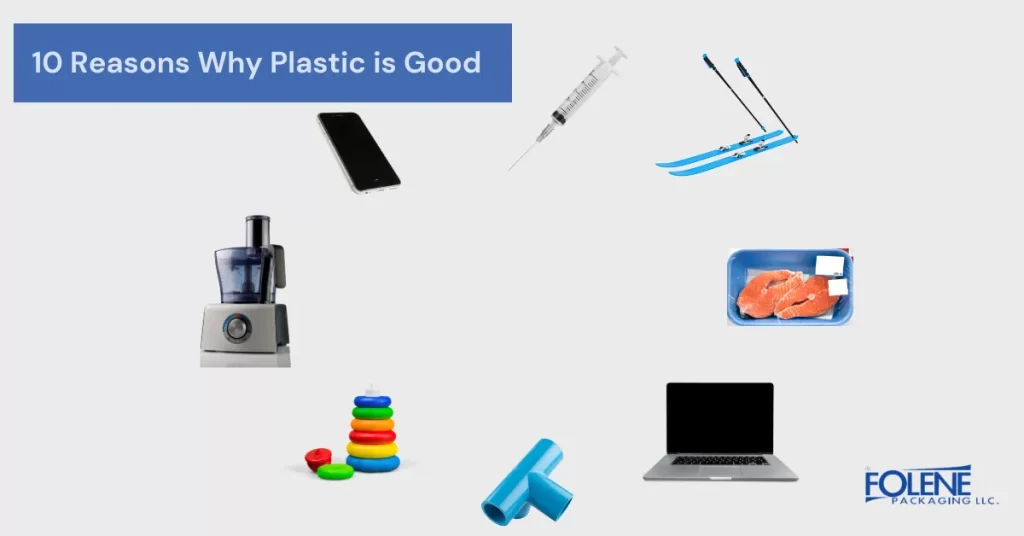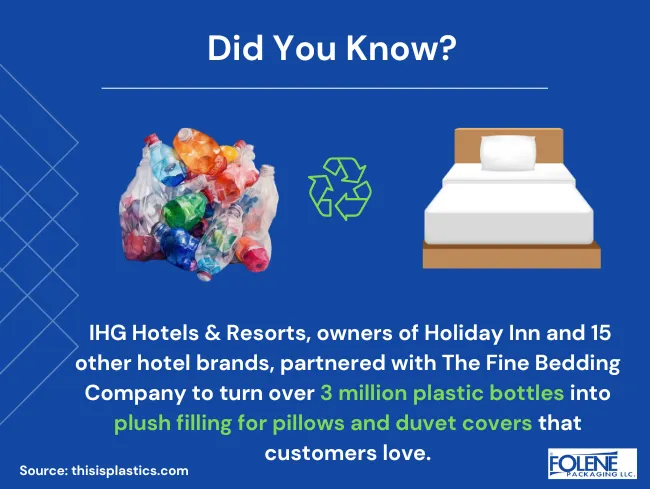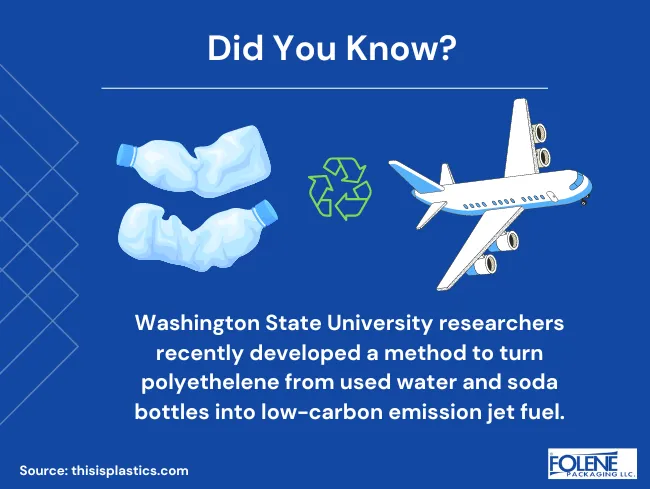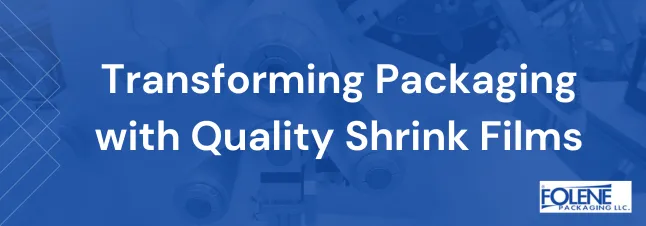
We all understand that overuse and mishandling of plastic at disposal causes pollution and greenhouse gas emissions. However, seeing that we all benefit from plastic, let’s list its benefits. According to a 2023 PLASTICS report, the U.S. plastics industry contributed over 1,000,000 jobs to the U.S. workforce in 2022. Every company should be proud of its products’ contributions to society. It is no different for those who are active in the plastics industry.
Plastic items, in their many forms, add happiness and enjoyment to our lives. Plastic enables consumers to benefit from affordable kiddie toys—which, along the way, produced between $28 and $40 billion in U.S. retail sales over 2023—to packaging for takeaway meals that satisfy the hungry traveler. Many popular sports rely on plastics such as ABS, Acetal, HDPE, Nylon, and UHMW to produce durable, high-quality sports equipment. The pros and cons of plastic are subject to debate. Yet, the benefits of plastic are many and undeniable.
What Is Plastic?
Plastic is a shapable synthetic material made from organic polymers. Producers use industrial systems to produce plastic, and most modern plastics are still mainly derived from fossil fuel-based chemicals. However, this is changing with the discovery of bioplastics, which are plastics made from plant crops and other alternative materials instead of fossil fuels.
The plastics industry includes the production of raw materials, compounding (mixing the polymers with different chemicals), the creation of finished products, and bundling of separate items, as well as the distribution and sale of plastic products. The CAGR for the global plastics industry is growing. Grand View Research provides that the value of the global plastic market was around $624.8 billion in 2023, and from 2024 to 2030, it is anticipated to grow at a CAGR of 4.2%. These figures reflect the millions of companies and people who work with plastics and the countless end users who benefit from it.

Uses of Plastic
What are the uses of plastic materials? Plastics contribute to many industries and sectors of the economy as follows: (credit: H. Nadeem):
Packaging – Around 36% (includes single-use plastic items for food and drink)
Construction – 16%
Textiles – 12%
Consumer products – 10%
Transportation – 7%
Electronics – 4%
Industrial equipment – 1%
Other – 12%
Why Is Plastic Useful in the Medical World?
The use of single-use plastics in hospitals and rehab centers is unavoidable. The JRSM provides a 2020 figure stating that globally, the medical plastics industry, worth $22.26 billion, accounts for 2% of total plastics production. Such use is increasing by 6.1% per year.
What Are the Benefits of Plastic?
Everyone comes into contact with plastic, which became popular in the 1950s. Over half a century later, perhaps aware of the good things about plastic, the average American utilizes around 340 grams of plastic daily for plastic bags, disposable cups, plastic bottles, and other plastic products. Plastic generation was 35.7 million tons in the U.S. in 2018.
How Does Plastic Help the Environment?
When you ask, “Why is plastic good for the environment?” The answer is that plastic has many advantages, and its use does help avoid climate change issues. Importantly, as awareness of the need to waste less grows, the uses of plastic are changing.
A sports apparel company called FC88 has taken up upcycling—a term created in 1994 by engineer Reiner Pliz—by upcycling valueless sports apparel into new, salable products. They turn deadstock into gifts and merchandise. Nicole Bekkers, who founded FC88, says that upcycling provides a sustainable solution for sports deadstock while allowing the excitement to continue.

10 Benefits of Plastic and Reasons Why Plastic Is Good
Plastic exists to help us make products available and affordable and increase convenience. However, plastic can support eco goals in several ways and help us protect the planet. Why is plastic good for the environment?
Read on to discover ten reasons why plastic is good.
1. What are plastics, if not lightweight?
The fact: Plastics are light in weight.
The benefit: Lightweight plastics enable us to reduce shipping costs and save on fuel consumption. They make cars lighter, and where we used to struggle to carry wooden chests or metal from deliveries or long-term storage, we can use waterproof, lightweight plastic ones instead.
2. One of the most significant positives of plastic: packaging
The fact: Plastic is ideal for packaging.
The benefit: Plastic packaging is crucial in preserving and protecting products, extending shelf life, and reducing transportation costs. There are many advantages of plastic for packaging. It is flexible, durable, and malleable. This is seen in the use of plastic materials for sustainable food packaging.
3. The benefits of plastic for devices and appliances
The fact: Plastic is an efficient material for our everyday appliances.
The benefit: Plastic helps create machines that help us, from computers to phones to food processors to drill handles to rice steamers – the list of machines we have is endless. Plastics helped realize Bill Gates’ vision of a computer on every desk and in every home. Medical devices, too, rely on this adaptable material to bring research and development to the consumer.
4. Why is plastic good? It’s strong and versatile
The fact: Plastic is a durable and versatile material.
The benefit: Plastic can be tough. Plastic can be molded into endless shapes and sizes. This makes it suitable for various applications such as sports helmets, footwear for the whole family, flooring, and car bumpers. Plumbers say that plastic pipes are often easier to work with. They cost less to install. Not only is it easier to cut and fit plastic pipes into tight corners, but it is easier to find unusual pieces for special requirements.
5. Pros of plastic: affordability
The fact: Plastic is cost-effective.
The benefit: Plastic is cheaper to produce than many other materials, including paper. The manufacturing process for plastic is generally efficient, using less water and energy than producing paper products and creating less waste as a side product. This saving is passed on to the consumer, making consumer goods from conventional plastics affordable. The latest plastic processing methods (injection molding) use up to 50% less energy than ten years ago. If plastic were exclusively produced by all-electric machinery, it would save 75% of overall energy. (bpf.co.uk)

6. Plastics recycling
The fact: Recycled plastics are easier to reuse than other materials.
The benefit: The recycled plastics industry is advanced, and plastic materials are successfully recycled in various ways, often with full consumer acceptance. No one balks at a water bottle containing 25% recycled plastic, but people may be less satisfied with the quality of recycled printing paper.
7. Long-term uses of plastic materials
The fact: Plastics have a longer lifetime than some materials.
The benefit: Plastic items can last years and withstand repeated use. That goes for plastic flatware and furniture. Faux leather for clothing and couches is durable and saves from using genuine leather. Plastic lasts longer than paper, such as paper straws and takeaway packaging.
8. The benefits of plastic for food
The fact: Plastic packaging also helps to reduce food waste.
The benefit: Plastic packaging enables food preservation and extends its shelf life. Specialized packaging, such as vacuum packaging of ready-to-eat foods, helps reduce greenhouse gas emissions by reducing the need for refrigeration and transportation.
9. Realize the benefits of reducing plastic waste
The fact: Plastic packaging can be streamlined.
The benefit: Plastics are light and sturdy, which means that plastic packaging can be simplified. Thinner, lighter, and smaller types of packaging use less plastic per product and fit more products per container. A secondary benefit of using plastic is the fuel economy gained. Trucks use less fuel to transport more items.
10. How is plastic good for the environment?
The fact: Plastic offers a significant energy advantage.
The benefit: Commercial and residential construction rely increasingly on plastics. Aside from versatility in color, strength, and availability (think of types of 3D print plastics for print on demand), building materials offer insulation for piping and UV-ray-filter windows to keep buildings cool and safe in the summer and warm in the winter. We waste less money and energy while keeping our homes and workplaces comfortable. Resilient and eco-friendly structures significantly reduce the global environmental footprint.
The Cons Of Plastic: The Problem of Pollution
There are pros and cons in plastic production. Using plastic as a substitute for animal products has prevented us from killing animals for their fur, ivory, and bones. Sometimes, it is a case of not producing less but producing smarter.
Unfortunately, however, plastic packaging is a significant contributor to plastic waste, with millions of tons of plastic debris generated annually.
One Green Planet shares the following:
The U.S. Environmental Protection Agency says the U.S. produces 32 million tons of plastic waste annually, of which only 9% is recycled.
270,000 tons of plastic is floating in the ocean, threatening the existence of around 700 marine species.

Folene Packaging Presents Polyolefin Shrink Film That Features Many of The Benefits of Plastic
Folene Packaging offers suppliers and retailers the entire range of Flxtite® shrink films. Flxtite® shrink films incorporate all these advantages. Shrink film is lightweight and strong and firmly holds your wares from pallets to portions until disposal. Shrink film is flexible and snug and economically wraps products to optimize total space. There is no wasted space between packages and no possibility of corners that don’t fit in a box.
We have mentioned many plastic benefits above, and it’s obvious why we have come to rely on shrink film. The slogan for plastic must be, “Use it and don’t abuse it,” and it will remain valuable and helpful. Dispose of shrink wrap in accordance with your local directives; recycle shrink wrap when possible.
Contact Folene Packaging to learn more about the benefits of plastic film and how such shrink film contributes to the business value chain with improved production, packaging, and transportation.



